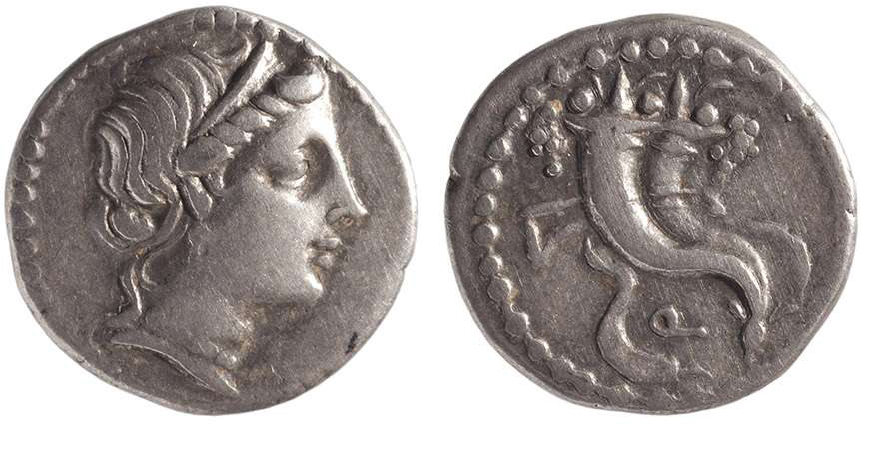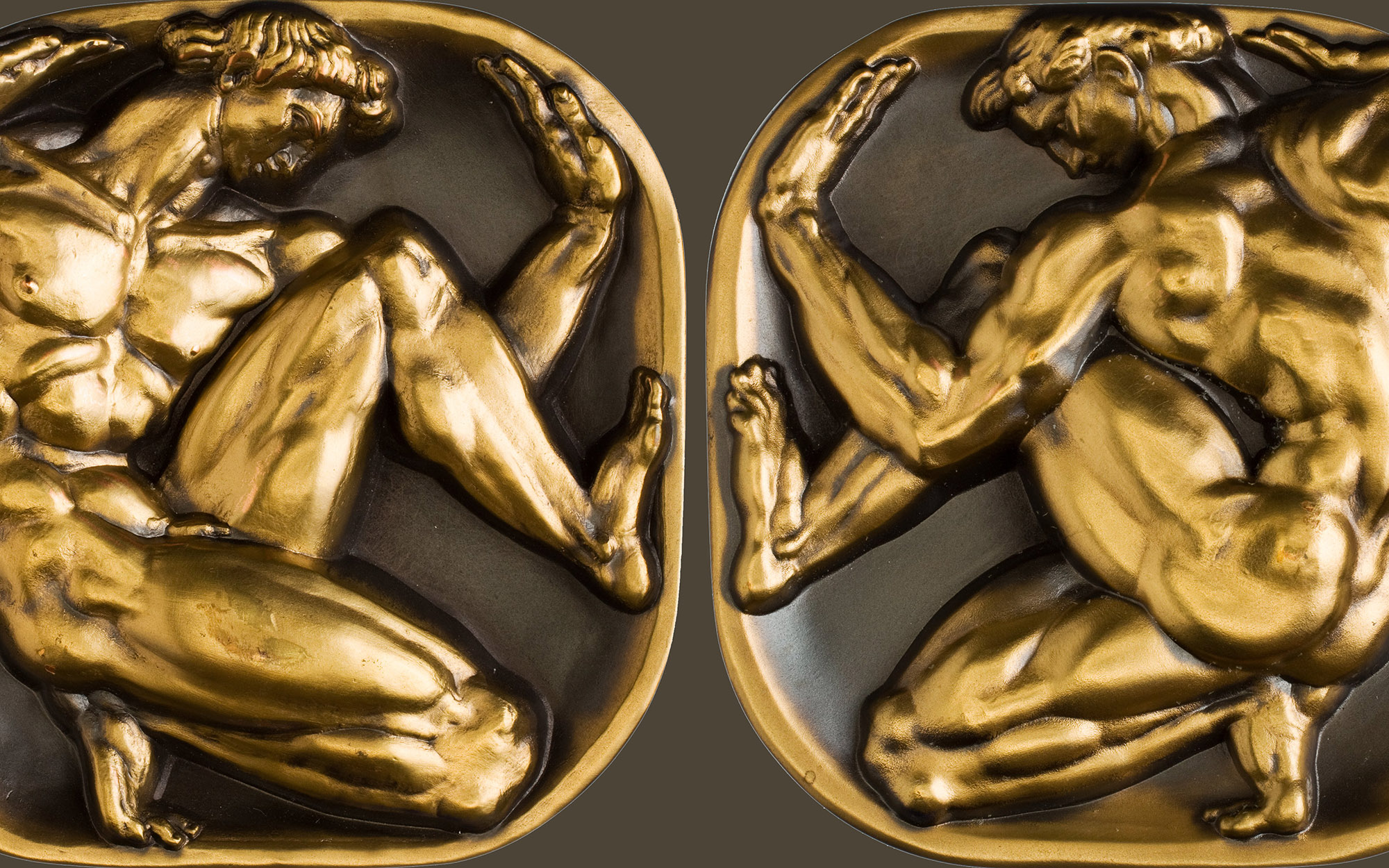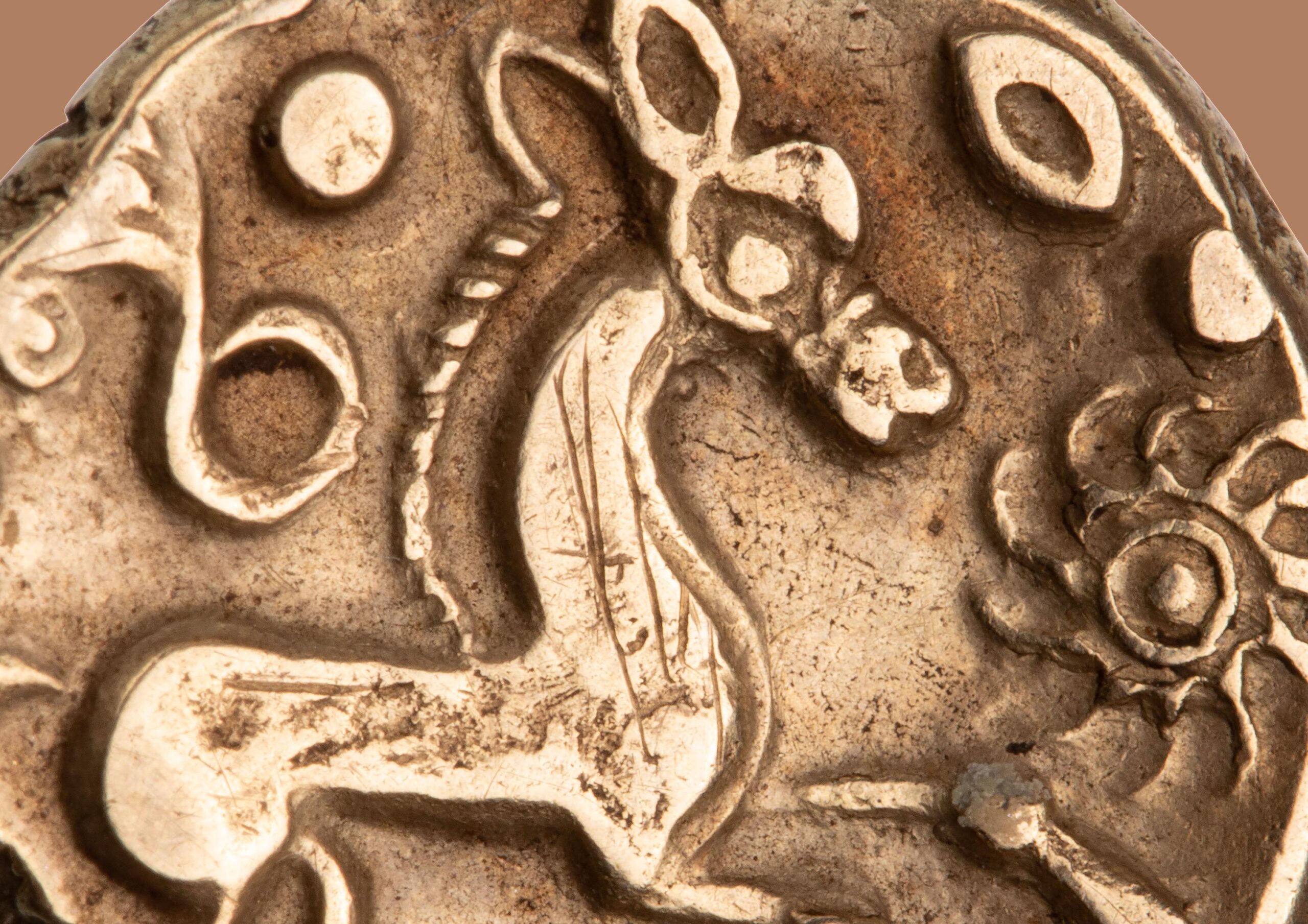New Data Release from the RRDP Project
by Alice Sharpless and Lucia Carbone
This blog post accompanies the second release of data for the RRDP Project. You can read more about the project and the first release in Carbone and Yarrow’s July 13, 2021 blog post.

With our second data release we are continuing with our focus on the period of 92–75 BCE (RRC types 336–392). The new release includes the following RRC types:
Some of the issues released, i.e., 357/1a, 357/1b, and 385/4 are ODEC: One Die for Each Control Mark (Fig. 2).

As the name suggests, ODEC issues have a specific correspondence between dies and control marks. Usually there is a univocal correspondence between obverse and reverse dies for each of these control marks. Early on, Schaefer realized the value of these types for understanding the coin production processes used at the Roman mint and also for testing and improving statistical models for estimating the original number of dies used to strike an issue. The current release has allowed us to add a total of 3,515 specimens to CRRO, including 2,541 ODEC specimens, thus further enhancing our knowledge of ODEC issues.

344/3 was minted under L. Titurius Sabinus in 89 BCE (Fig. 3). Crawford counted 200 reverse dies, but with Schaefer’s materials this number has been raised to 224. Schaefer’s materials also reveal six new control symbols of Titurius Sabinus:
- S-shaped symbol (die 64)
- Wreath (2 dies: 65A and 65B)
- Uncertain symbol (die 66)
- Uncertain symbol (die 67, Fig. 3)
- Crescent (die 69)
- Star (2 dies: 70A and 70B)
Schaefer’s materials also include a second example of a variant reverse die where Victory holds a whip rather than wreath, with no control mark. Crawford had already noted the example in the collection of the University of Oslo. Before this data release there were 283 specimens represented in CRRO. There are now 770 specimens in CRRO.

357/1a and 357/1b both date to 83 BCE, minted under G. Norbanus. 357/1a seems to be a small issue. Schaefer’s materials provide examples of 26 obverse dies. Crawford gave a range of numbered control marks from I to XXVI. Schaefer’s materials also include specimens with the control marks CXXXXVII and CXV (one die for each). These higher control marks might indicate that the issue was much larger than previously known, or these may be imitations. Before this data release there were 49 specimens represented in CRRO. There are now 217. 357/1b is a much larger issue. Crawford noted 156 obverse dies, but we can now raise that number to 210,with an additional 5 imitation dies. These materials do not add any new control marks to the range of I to CCXXVIIII provided by Crawford. Schaefer’s materials also show that this particular issue has a high number of brockages. This data release has added an additional 1,796 specimens to CRRO.

385/4 is another large issue minted under M. Voltei M. F. in 78 BCE which has both obverse and reverse control marks. This moneyer created a series wherein each of the five coins celebrates a different major religious festival: the ludi Romani (or plebeii, represented in RRC 385/1), Cereales (RRC 385/3), Megalenses (RRC 385/4), Apollinares (RRC 385/5), and, as it is suggested by the types on RRC 385/2, the short-lived ludi Herculani (for a criticism to this chronology, see Keaveney 2005).The issue included in this data release thus celebrated the ludi Megalenses, which were established in 204 BCE to honor the Magna Mater, Cybele, as suggested by the reverse. Schaefer’s materials reveal 78 obverse dies (an increase from 71 noted by Crawford), although one is likely an imitation. There are 79 reverse dies (an increase from 71 noted by Crawford), three of which are probably imitations. This RRDP release has increased the specimens on CRRO from 182 to 759. Most notably, Schaefer’s materials also contribute six new obverse control marks that were not included by Crawford. They also allow for four corrections to Crawfords list (see table). Schaefer has shown that two of the reverse control marks (ΛΕ and ΜΘ) actually have two associated dies though there is no corresponding change in obverse die. This may suggest the original reverse dies broke or were damaged earlier than expected. The following table shows the updated list of control marks. New or corrected control marks are in bold. Schaefer also includes one specimen which appears to be an imitation of the Thyrsus/Θ pair. We are indebted to our volunteer David van Dyke for his work on this issue.
| Obverse | Reverse |
| Α | |
| Winged caduceus | B |
| Crescent | Γ |
| Star (Obverse 1002) | Δ |
| Ε | |
| Butterfly | Σ |
| Ζ | |
| Wreath | Η |
| Thyrsus | Θ |
| Strigil | Ι |
| Tongs | ΙΑ |
| Axe | ΙΒ |
| Tortoise | ΙΓ |
| ΙΔ | |
| Lizard (Obverse 1010) | ΙΕ |
| ΙΣ | |
| Frog | ΙΖ |
| Heron walking | ΙΗ |
| Peacock (Fig. 4; Obverse 1012) | ΙΘ |
| Plane (Obverse 1013) | Κ |
| Owl | ΚΑ |
| Bird r. (pea-hen?) (Obverse 1015) [Crawford identifies as Peacock, but new control mark (above) show this cannot be a peacock; perhaps is a pea-hen, see Fig. 5] | ΚΒ |
| Amphora | ΚΓ |
| Anchor | ΚΔ |
| Club | ΚΕ |
| Lecythus | ΚΣ |
| ΚΖ | |
| Candelabrum | ΚΗ |
| Rooster | ΚΘ |
| Palm-branch | Λ |
| Piercer (Crawford, Pl. LXX 50) | ΛΑ |
| Simpulum | ΛΒ |
| ΛΓ | |
| ΛΔ | |
| Stilus (Obverse 1025) | ΛΕ (2 dies, Fig. 6-7) |
| Pentagram | ΛΣ |
| Pileus with star | ΛΖ |
| Boot r. (Crawford, Pl. LXX, 51) | ΛΗ |
| Wheel | ΛΘ |
| Perfume-jar (Crawford, Pl. LXX, 52) | Μ |
| Staff with double hook | ΜΑ |
| Pelta | ΜΒ |
| Macedonian shield | ΜΓ |
| Pear-shaped shield | ΜΔ |
| Oval shield | ΜΕ |
| Oblong shield with rounded corners | ΜΣ |
| Oblong shield with square corners | ΜΖ |
| Small round shield | ΜΗ |
| Large round shield | ΜΘ (2 dies) |
| Ear | Ν |
| Lyre-key | ΝΑ |
| Leaf | ΝΒ |
| Lighted altar (Crawford, Pl. LXX, 53) | ΝΓ |
| Altar (Crawford, Pl. LXX, 53) | ΝΔ |
| Axe/Hatchet (Crawford,Pl. LXX, 54) | ΝΕ |
| Duck’s head | ΝΣ (not ΝΕ) |
| Dolphin | ΝΖ |
| Crab | ΝΗ |
| Scorpion | ΝΘ |
| Stove (Pl. LXX, 55) | Ξ |
| Lamp | ΞΑ |
| Thunderbolt | ΞΒ |
| Plumb-bob | ΞΓ |
| Dagger | ΞΔ |
| Dividers | ΞΕ |
| Short boot (Pl. LXX, 56) | ΞΣ |
| Foot r. | ΞΖ |
| Gourd? (Obverse 1059) [Crawford identifies as Knife-blade but this seems to be a mistake] | ΞΗ |
| ΞΘ | |
| Bow and quiver | Ο |
| Hoop | ΟΑ |
| Fish | ΟΒ |
| Crawford, Pl. LXX, 58 | ΟΓ |
| Small plumb bob? (Obverse 1065) | ΟΔ |
| Bunch of grapes | ΟΕ |
| Pedum | ΟΣ |
| Ladder | ΟΖ |
| Poppy-head | ΟΗ |
| Shovel (Crawford, Pl. LXX, 59) | ΟΘ |
| Small broom (Crawford, Pl. LXX, 60; Obverse 1071) [Crawford identifies as “comb” but probably associated with previous as tools for clearing fire ash] | Π |
| Mask of Silenus (Obverse 1072) [Crawford identifies as Mask of Pan] | ΠΑ |
| Mask of Pan (Obverse 1073) | ΠΒ |
| Crested helmet | ΠΓ |
| Cornucopiae | ΠΔ |
| Tripod | ΠΕ |


A second group of issues included in this release is instrumental in illustrating the financing of Sulla’s campaign in Italy in 84-82 BCE. 359/1 (aureus) and 359/2 (denarius) are issues of L. Cornelius Sulla. For 359/1, Schaefer’s materials add five new specimens to CRRO, with the result that CRRO now includes all ten known specimens. Crawford recorded 6 obverse and 6 reverse dies for 359/1. Schaefer’s materials reveal another two for each, for a total of 8 reverse and 8 obverse dies. For 359/2, Schaefer’s materials provide 187 reverse dies—a significant increase from the 36 reverse dies Crawford recorded—and add 277 specimens to CRRO. There is a high number of singleton reverse dies, an element that could hint at an Eastern mint for these issues. An Eastern production is also suggested by the die-axis, which present a strong tendency toward 12:00, a common practice for Greek coinage, but almost unattested in Roman Republican coinage The Eastern minting techniques, together with the iconographical similarities between the reverse of these RRC issues and the so-called Athenian ‘trophies’ tetradrachms, strongly connect RRC 359 issues to the early phases of Sulla’s reconquest of Italy (Figs. 8–9).

The anonymous issues 375/1 (aureus) and 375/2 (denarius, Fig. 1) were recently published by Alberto Campana (“L’Emissione con “Q” di Silla (RRC 375/1–2, 82 a.C.)” Monete Antiche 118 (2021): 3–30). The aureus 357/1 is known from only a single specimen in the BnF (REP-21376). For 357/2, Campana includes more specimens than Schaefer and identifies 40 obverse and 111 reverse dies plus two plated obverse and reverse dies. Schaefer’s materials include 98 reverse dies and add 205 specimens to CRRO. On the basis of hoard evidence, Campana convincingly argues that these issues should also be included among the ones financing Sulla’s campaigns and possibly dated to the same years as RRC 359 issues. The contribution of RRDP to our knowledge of Sullan campaign financing strategies will be presented by Lucia Carbone on November 10 at the University of Virginia.

The next RRDP release, tentatively scheduled for January 2022, will include all of the RRC 367 types, also related to the Sullan campaigns of 84–82 BCE. Crawford identifies five types (three denarii, two aurei) of this joint issue of Sulla and L. Manlius Torquatus. But it seems this issue can actually be broken down into more than five types, some of which were marked with control symbols. By focusing on 367 we aim to disentangle and revise Crawford’s typologies.




